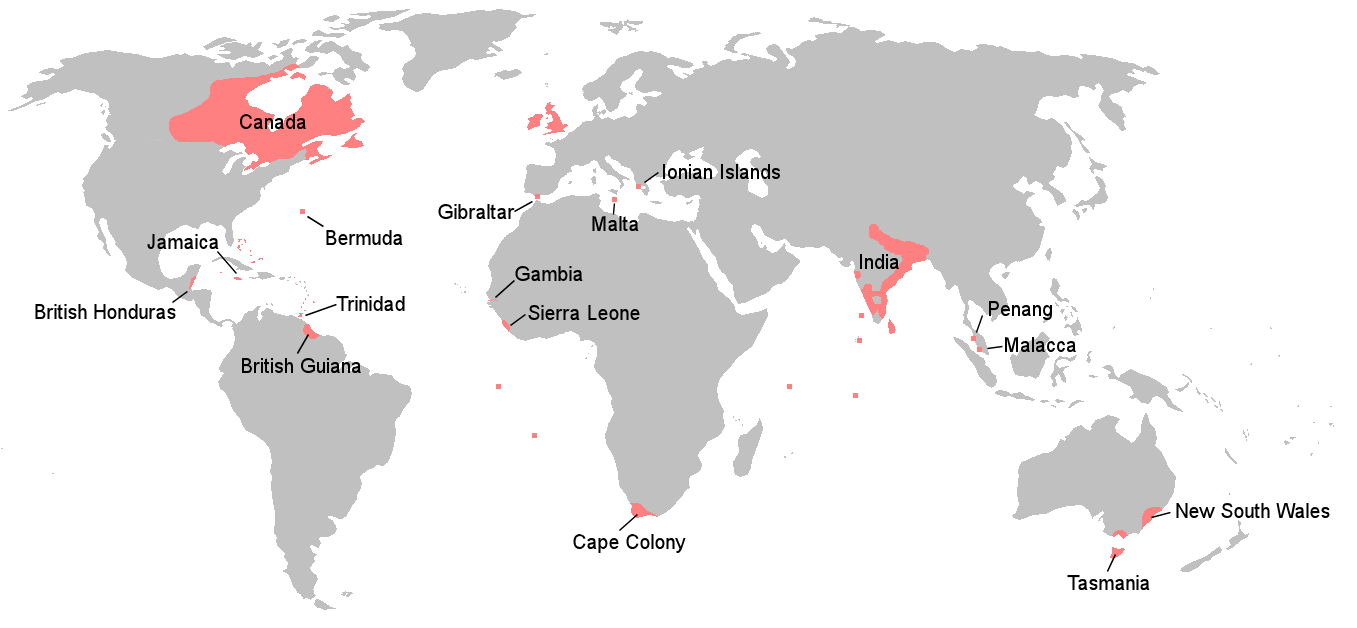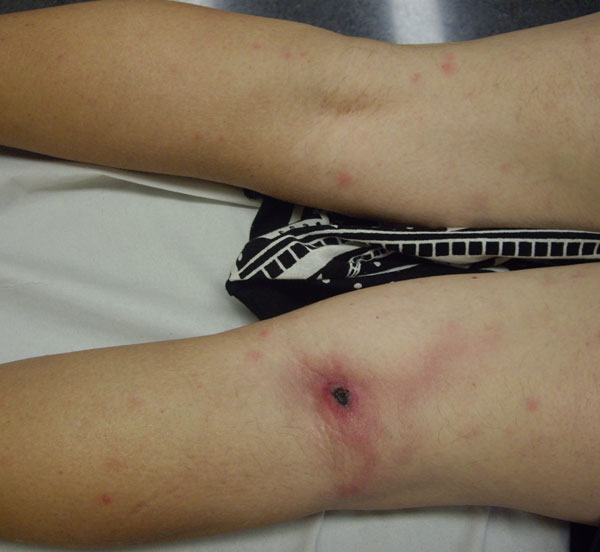|
John Vetch
John Vetch MD (1783–1835) was a Scottish army surgeon, now known for his early work on trachoma. The variant spelling Veitch of his surname was also used. Life He was the eldest son of Robert Vetch of Caponflat, born in East Lothian; James Vetch and Hamilton Vetch were younger brothers. He graduated M.D. at the University of Edinburgh in 1804. He joined the army, in the position of hospital mate until he was commissioned in August 1806. A depot hospital had been set up in 1801 at Selsey to treat British troops returning from the fighting in the French campaign in Egypt and Syria, with the condition called "Egyptian ophthalmia". The name was not a very good fit, but its scope in severe cases is recognised as modern medicine's trachoma. Stewart Duke-Elder considered that further pathogens were involved, Weeks Koch bacillus, and some mixture of gonococcus. In 1804 Vetch observed in a battalion of the 52nd Foot at Hythe, Kent, an apparent outbreak of contagious ophthalmia, which ... [...More Info...] [...Related Items...] OR: [Wikipedia] [Google] [Baidu] |
Trachoma
Trachoma is an infectious disease caused by bacterium '' Chlamydia trachomatis''. The infection causes a roughening of the inner surface of the eyelids. This roughening can lead to pain in the eyes, breakdown of the outer surface or cornea of the eyes, and eventual blindness. Untreated, repeated trachoma infections can result in a form of permanent blindness when the eyelids turn inward. The bacteria that cause the disease can be spread by both direct and indirect contact with an affected person's eyes or nose. Indirect contact includes through clothing or flies that have come into contact with an affected person's eyes or nose. Children spread the disease more often than adults. Poor sanitation, crowded living conditions, and not enough clean water and toilets also increase spread. Efforts to prevent the disease include improving access to clean water and treatment with antibiotics to decrease the number of people infected with the bacterium. This may include treating, al ... [...More Info...] [...Related Items...] OR: [Wikipedia] [Google] [Baidu] |
39th (Dorsetshire) Regiment Of Foot
The 39th (Dorsetshire) Regiment of Foot was an infantry regiment of the British Army, raised in 1702. Under the Childers Reforms it amalgamated with the 54th (West Norfolk) Regiment of Foot to form the Dorsetshire Regiment in 1881. History Early years The regiment was first raised by Adam Loftus, 1st Viscount Lisburne as Viscount Lisburne's Regiment of Foot in 1689 but was disbanded in 1697. It was re-raised in Ireland, without lineal connection to the previous regiment, by Colonel Richard Coote as Richard Coote's Regiment of Foot in August 1702. The regiment landed at Lisbon in June 1707 for service in the War of the Spanish Succession.Cannon, p. 3 It saw action at the Battle of La Gudina in May 1709Cannon, p. 5 and then remained in Portugal until 1713 when it embarked for Gibraltar and then moved to Menorca later in the year.Cannon, p. 8 It was posted to Ireland in 1719 and sailed to Gibraltar in 1726 to reinforce the garrison.Cannon, p. 9 The regiment sailed for Jamaica in ... [...More Info...] [...Related Items...] OR: [Wikipedia] [Google] [Baidu] |
Charterhouse Chapel
The London Charterhouse is a historic complex of buildings in Farringdon, London, dating back to the 14th century. It occupies land to the north of Charterhouse Square, and lies within the London Borough of Islington. It was originally built (and takes its name from) a Carthusian priory, founded in 1371 on the site of a Black Death burial ground. Following the priory's dissolution in 1537, it was rebuilt from 1545 onwards to become one of the great courtyard houses of Tudor London. In 1611, the property was bought by Thomas Sutton, a businessman and "the wealthiest commoner in England", who established a school for the young and an almshouse for the old. The almshouse remains in occupation today, while the school was re-located in 1872 to Godalming, Surrey. Although substantial fragments survive from the monastic period, most of the standing buildings date from the Tudor era. Thus, today the complex "conveys a vivid impression of the type of large rambling 16th-century mansi ... [...More Info...] [...Related Items...] OR: [Wikipedia] [Google] [Baidu] |
Lord Palmerston
Henry John Temple, 3rd Viscount Palmerston, (20 October 1784 – 18 October 1865) was a British statesman who was twice Prime Minister of the United Kingdom in the mid-19th century. Palmerston dominated British foreign policy during the period 1830 to 1865, when Britain stood at the height of its imperial power. He held office almost continuously from 1807 until his death in 1865. He began his parliamentary career as a Tory, defected to the Whigs in 1830, and became the first prime minister from the newly formed Liberal Party in 1859. He was highly popular with the British public. David Brown argues that "an important part of Palmerston's appeal lay in his dynamism and vigour". Henry Temple succeeded to his father's Irish peerage (which did not entitle him to a seat in the House of Lords, leaving him eligible to sit in the House of Commons) as the 3rd Viscount Palmerston in 1802. He became a Tory MP in 1807. From 1809 to 1828 he served as Secretary at War, organising the fi ... [...More Info...] [...Related Items...] OR: [Wikipedia] [Google] [Baidu] |
John Peter Grant (MP)
John Peter Grant (21 September 1774 – 17 May 1848) was a Scottish politician from Inverness-shire who sat in the House of Commons for English constituencies between 1812 and 1826. Life John Peter Grant was born in 1774. Educated at Edinburgh High School and Edinburgh University, he was a Member of Parliament (MP for Great Grimsby from 1812 to 1818, then for Tavistock from 1819 to 1826. After leaving Parliament, he became a judge in British India, serving as Puisne judge of Bombay from 1827 to 1830, and of Bengal from 1833 to 1848. His children included Sir John Peter Grant the M.P. and Elizabeth Grant the diarist.Christine Lodge, ‘Smith , Elizabeth (1797–1885)’, Oxford Dictionary of National Biography, Oxford University Press, 200accessed 8 Sept 2015/ref> He died on board ship during a return journey to Britain, and was buried at sea. His wife Jane Ironside Grant is buried against the original north wall of Dean Cemetery The Dean Cemetery is a hi ... [...More Info...] [...Related Items...] OR: [Wikipedia] [Google] [Baidu] |
Emetics
Vomiting (also known as emesis and throwing up) is the involuntary, forceful expulsion of the contents of one's stomach through the mouth and sometimes the nose. Vomiting can be the result of ailments like food poisoning, gastroenteritis, pregnancy, motion sickness, or hangover; or it can be an after effect of diseases such as brain tumors, elevated intracranial pressure, or overexposure to ionizing radiation. The feeling that one is about to vomit is called nausea; it often precedes, but does not always lead to vomiting. Impairment due to alcohol or anesthesia can cause inhalation of vomit, leading to suffocation. In severe cases, where dehydration develops, intravenous fluid may be required. Antiemetics are sometimes necessary to suppress nausea and vomiting. Self-induced vomiting can be a component of an eating disorder such as bulimia, and is itself now classified as an eating disorder on its own, purging disorder. Complications Aspiration Vomiting is dangerous if ... [...More Info...] [...Related Items...] OR: [Wikipedia] [Google] [Baidu] |
Copper Sulphate
Copper sulfate may refer to: * Copper(II) sulfate, CuSO4, a common compound used as a fungicide and herbicide * Copper(I) sulfate, Cu2SO4, which is uncommonly used * Copper(II) sulfate, CuSO4 is greenish blue Copper compounds {{Chem-stub ... [...More Info...] [...Related Items...] OR: [Wikipedia] [Google] [Baidu] |
Escharotic
An eschar (; Greek: ''ἐσχάρᾱ'', ''eskhara''; Latin: ''eschara'') is a slough or piece of dead tissue that is cast off from the surface of the skin, particularly after a burn injury, but also seen in gangrene, ulcer, fungal infections, necrotizing spider bite wounds, tick bites associated with spotted fevers and exposure to cutaneous anthrax. The term ‘eschar’ is not interchangeable with ‘scab’. An eschar contains necrotic tissue whereas a scab is composed of dried blood and exudate. Black eschars are most frequently attributed in medicine to cutaneous anthrax (infection by ''Bacillus anthracis''), which may be contracted through herd animal exposure and also from ''Pasteurella multocida'' exposure in cats and rabbits. A newly identified human rickettsial infection, ''R. parkeri'' rickettsiosis, can be differentiated from Rocky Mountain spotted fever by the presence of an eschar at the site of inoculation. Eschar is sometimes called a ''black wound'' because ... [...More Info...] [...Related Items...] OR: [Wikipedia] [Google] [Baidu] |
Silver Nitrate
Silver nitrate is an inorganic compound with chemical formula . It is a versatile precursor to many other silver compounds, such as those used in photography. It is far less sensitive to light than the halides. It was once called ''lunar caustic'' because silver was called ''luna'' by ancient alchemists who associated silver with the moon. In solid silver nitrate, the silver ions are three- coordinated in a trigonal planar arrangement. Synthesis and structure Albertus Magnus, in the 13th century, documented the ability of nitric acid to separate gold and silver by dissolving the silver. Indeed silver nitrate can be prepared by dissolving silver in nitric acid followed by evaporation of the solution. The stoichiometry of the reaction depends upon the concentration of nitric acid used. :3 Ag + 4 HNO3 (cold and diluted) → 3 AgNO3 + 2 H2O + NO :Ag + 2 HNO3 (hot and concentrated) → AgNO3 + H2O + NO2 The structure of silver nitrate has been examined by X-ray crystallography sev ... [...More Info...] [...Related Items...] OR: [Wikipedia] [Google] [Baidu] |
Astringent
An astringent (sometimes called adstringent) is a chemical that shrinks or constricts body tissues. The word derives from the Latin ''adstringere'', which means "to bind fast". Calamine lotion, witch hazel, and yerba mansa, a Californian plant, are astringents. Astringency, the dry, puckering or numbing mouthfeel caused by the tannins in unripe fruits, lets the fruit mature by deterring eating. Ripe fruits and fruit parts including blackthorn (sloe berries), '' Aronia'' chokeberry, chokecherry, bird cherry, rhubarb, quince and persimmon fruits (especially those which are unripe), banana skins (or unripe bananas), cashew fruits and acorns are astringent. Citrus fruits, like lemons, are somewhat astringent. Tannins, being a kind of polyphenol, bind salivary proteins and make them precipitate and aggregate, producing a rough, "sandpapery", or dry sensation in the mouth. The tannins in some teas, coffee, and red grape wines like Cabernet Sauvignon and Merlot produce mild astri ... [...More Info...] [...Related Items...] OR: [Wikipedia] [Google] [Baidu] |
Granuloma
A granuloma is an aggregation of macrophages that forms in response to chronic inflammation. This occurs when the immune system attempts to isolate foreign substances that it is otherwise unable to eliminate. Such substances include infectious organisms including bacteria and fungi, as well as other materials such as foreign objects, keratin, and suture fragments. Definition In pathology, a granuloma is an organized collection of macrophages. In medical practice, doctors occasionally use the term ''granuloma'' in its more literal meaning: "a small nodule". Since a small nodule can represent any tissue from a harmless nevus to a malignant tumor, this use of the term is not very specific. Examples of this use of the term ''granuloma'' are the lesions known as vocal cord granuloma (known as contact granuloma), pyogenic granuloma, and intubation granuloma, all of which are examples of granulation tissue, not granulomas. "Pulmonary hyalinizing granuloma" is a lesion characte ... [...More Info...] [...Related Items...] OR: [Wikipedia] [Google] [Baidu] |
Purulent
Pus is an exudate, typically white-yellow, yellow, or yellow-brown, formed at the site of inflammation during bacterial or fungal infection. An accumulation of pus in an enclosed tissue space is known as an abscess, whereas a visible collection of pus within or beneath the epidermis is known as a pustule, pimple or ''spot''. Description Pus consists of a thin, protein-rich fluid (historically known as ''liquor puris'') and dead leukocytes from the body's immune response (mostly neutrophils). During infection, macrophages release cytokines, which trigger neutrophils to seek the site of infection by chemotaxis. There, the neutrophils release granules, which destroy the bacteria. The bacteria resist the immune response by releasing toxins called leukocidins.Madigan, Michael T. and Martin, John M. Brock Biology of Microorganisms 11th ed. Pearson Prentice Hall. US. 2006: 734 As the neutrophils die off from toxins and old age, they are destroyed by macrophages, forming the ... [...More Info...] [...Related Items...] OR: [Wikipedia] [Google] [Baidu] |







